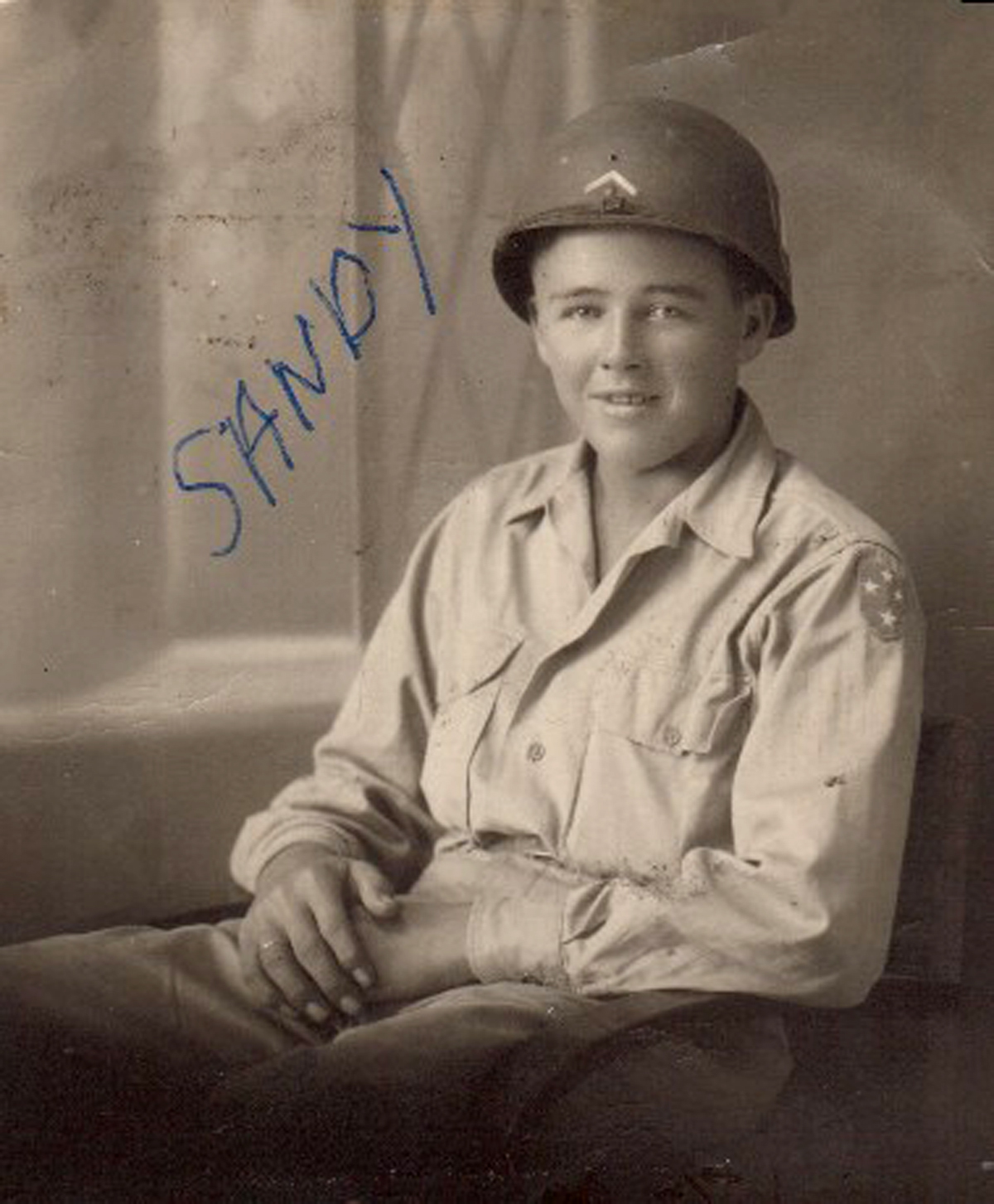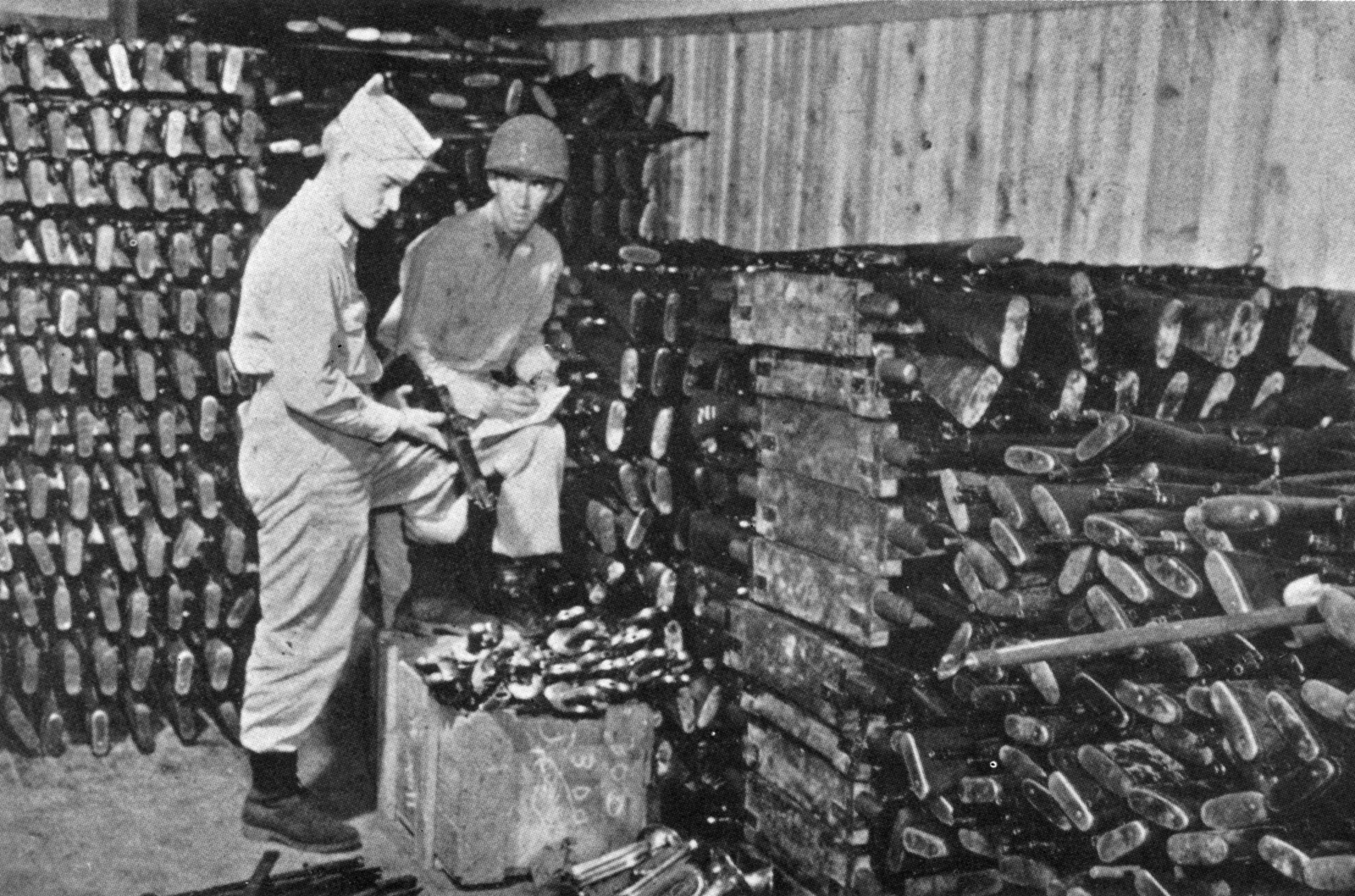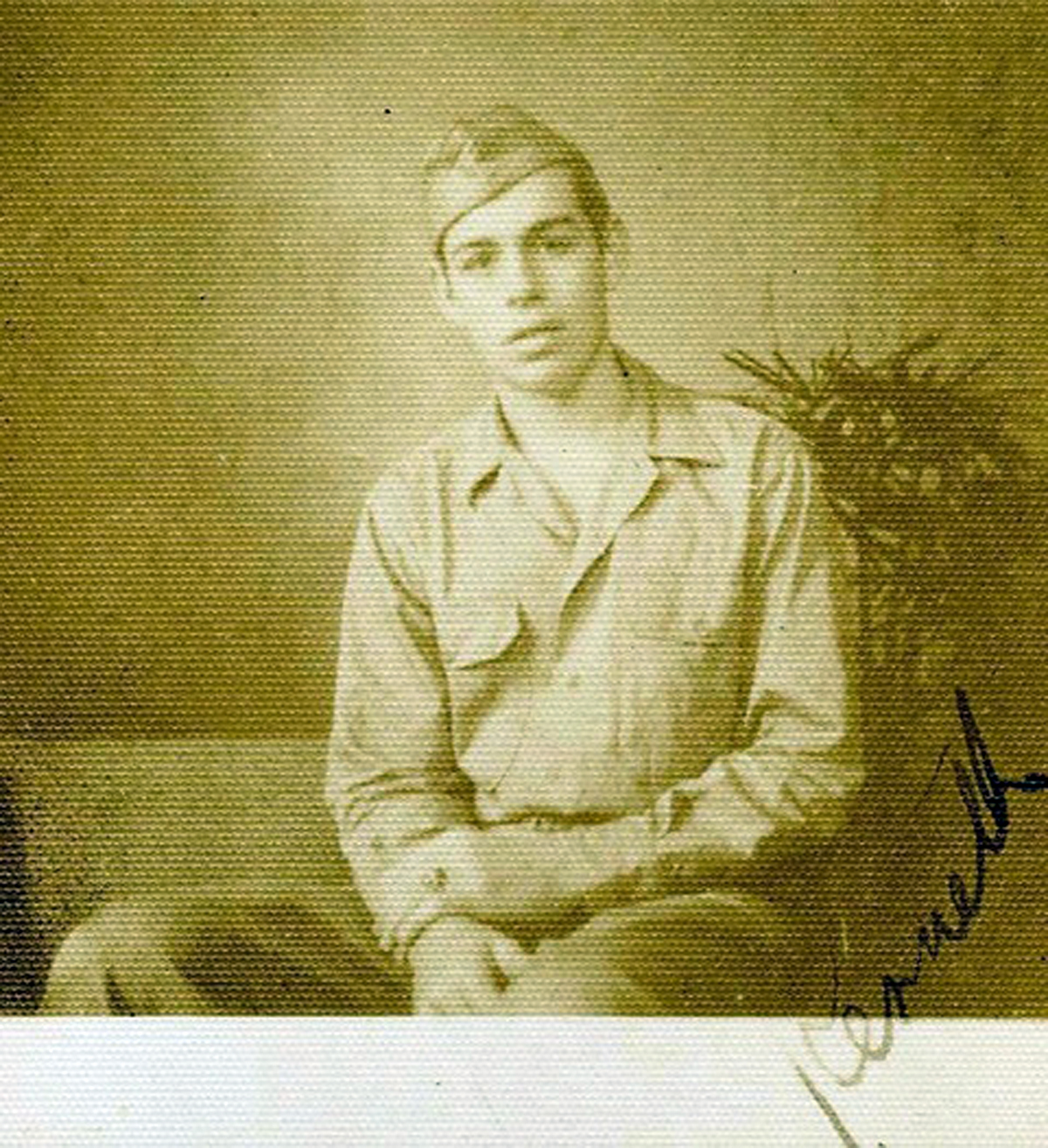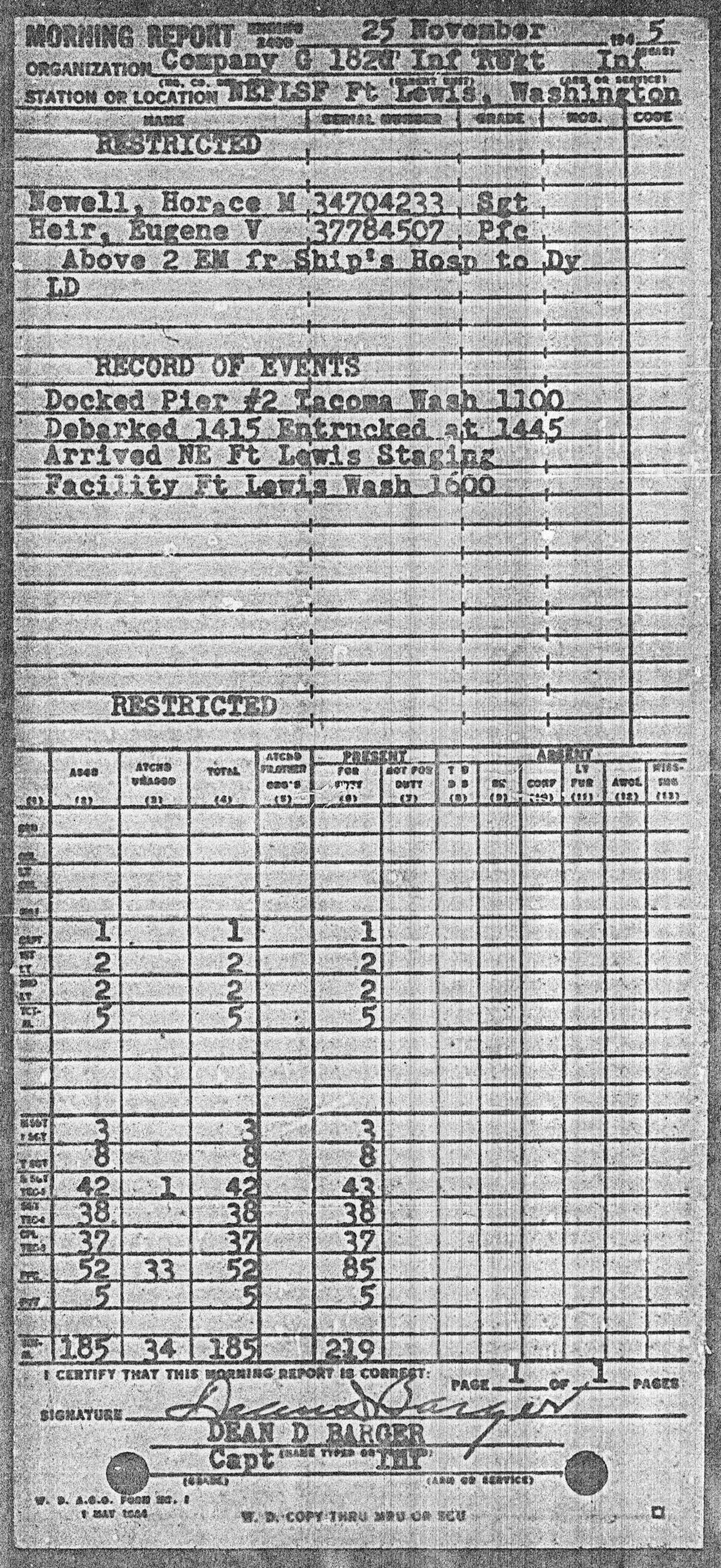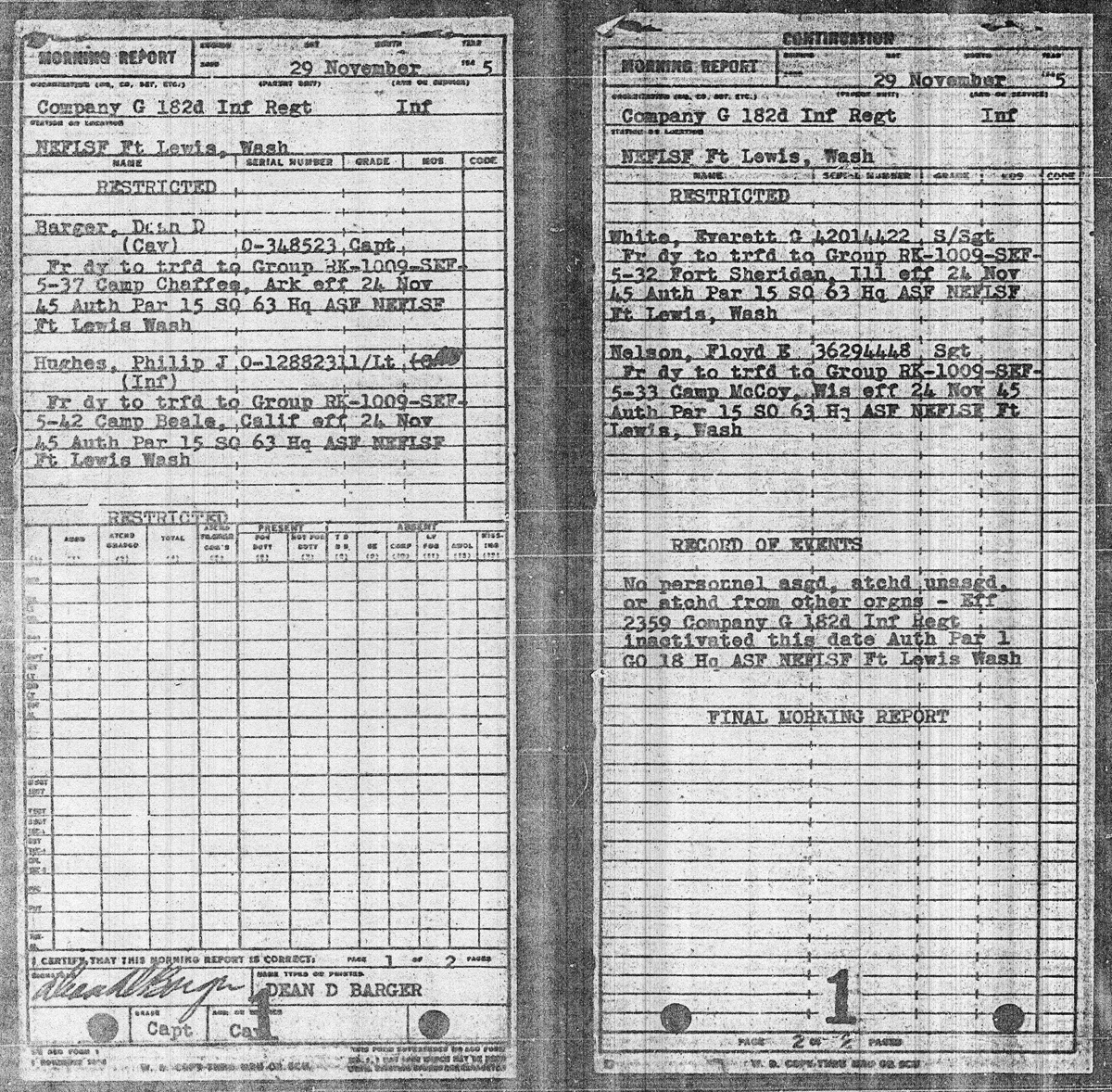Ships bearing the men of the American Division departed Cebu on 30 August, headed for occupation duty in Japan. During the late stages of their deployment to Cebu, the Americal had been preparing for the future invasion of Japan. But the end of World War II made this invasion unnecessary. Instead, they disembarked peacefully at Yokohama (see Google Map here) on 8-10 September, and set foot on land that just 2 weeks earlier seemed a world away. The sudden and shocking end to the war was like the reprieve of a death sentence to Allied soldiers. Given the stiff resistance being put up all across the Pacific, it was assumed that the casualties in an invasion of the Japanese home islands would have been horrific. Over the course of four years in the Pacific, the roster of Company G turned over repeatedly. The men from Camp Edwards had been steadily replaced, until the unit that landed in Japan was mostly unrecognizable from the one that left New York in early 1942. In Photo #1, a very young Americal soldier named Sandy poses for a photo in Japan.
American forces on occupation duty in Japan had to keep the peace, as well as help dismantle the sizeable Japanese military. Very few problems were encountered with the Japanese military, or the civilian population. Reconnaissance and inventory of Japanese weapons and manufacturing facilities was a key task for the Americal. In Photo #2, Americal Division officers inspect a large collection of Japanese weapons at Yokohama. The soldiers of the 182nd had the chance to visit Japanese cities and the countryside, though much of it had been obliterated by Allied air strikes. Ken Vander Molen poses here in Photo #3 for a studio portrait that he recalled was taken in Fuchinobe. By early November, the mission of the Americal in Japan was complete, and transports began to depart for home.
At the end of November 1945, what remained of the 182nd Infantry arrived home in the United States. Company G disembarked from the USS Admiral Coontz and boarded trucks to Fort Lewis, in Washington state, per the Morning Report shown in Photo #4. The ranks were swollen with men returning home – 219 soldiers reported on the rolls. The Morning Report shown in Photo #5, dated November 29, 1945, marked the end of the road for Company G. The last 4 soldiers of the unit were transferred to other units, and the unit was inactivated at 1 minute before midnight. The report is signed by Captain Dean Barger, the final CO of Company G. In December, both the 182nd Infantry Regiment and the Americal Division were inactivated. The units had endured great hardship, but contributed greatly to Allied victory.
During the course of the war, the Americal Division suffered 1448 men killed, and 4319 wounded. The exact number of casualties from Company G is difficult to pin down, given the gaps in military records, and the inconsistency of record keeping throughout the war. The best estimate, taken from a personal list kept by Ed Monahan (which almost exactly matches the fragmentary military evidence compiled to date), is that more than 53 men from the company were killed over the course of the war. Further research is underway to determine this number more accurately.

